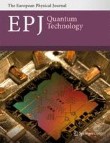2022 Citation Impact
5.3 - 2-year Impact Factor
5.2 - 5-year Impact Factor
1.969 - SNIP (Source Normalized Impact per Paper)
1.101 - SJR (SCImago Journal Rank)
2023 Speed
17 days submission to first editorial decision for all manuscripts (Median)
135 days submission to accept (Median)
2023 Usage
326,493 downloads
100 Altmetric mentions
